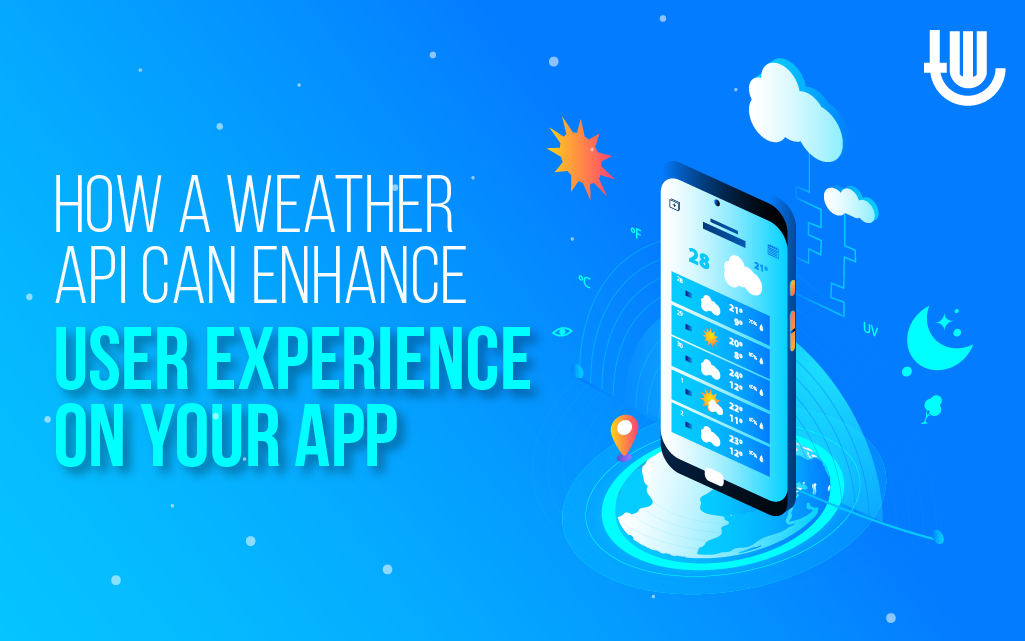
The most important component of any application is the user experience: it determines the entire viability of the product, as a large and diverse user base is exactly what advertisers and investors crave. It’s essential, then, to meet as many consumer expectations as possible, no matter what kind of application you are building.
Another element is that you want your users to spend as much time on your application as possible, without the need to back out and look at anything else. Given that most people want up-to-date weather information all throughout their day, it makes sense that you would incorporate even a basic weather forecast into your application, preventing users from feeling the need to leave your application.
However, you may not want to spend the money and time developing your own weather forecasting just as a bonus feature of your app, so you might see weather additions as cost-prohibitive. They don’t need to be though: you can keep your whole attention on the main uses of your app when you’ve automated much of the technical aspects, including gathering and parsing weather data.
An API allows you to gather thousands of data points with little effort
An Application Programming Interface (API) essentially hooks your app up to an array of excellent weather datasets, including those from the National Oceanic and Atmospheric Agency: one of the gold standards when it comes to any meteorological data collection. Rather than gathering this information yourself, you will simply retrieve it from the API for integration into your app or website, refreshing as often as your data limits allow. You can access global data points or just those within a given city or state, depending on the geographic spread of your user base, and you can also provide historical data or futurecasting should you choose.
One of the best aspects of a weather API is that its systems are very robust and can handle a lot of traffic, meaning that they ensure excellent scalability and reliability. Not only will you receive the benefit of highly accurate weather data, but you also don’t need to worry about your own systems being overloaded by individuals requesting weather data.
Including real-time weather data can be highly applicable to numerous different app types – not just those focused on weather
Any application or website that relies upon geolocation can benefit from using a weather API to customize the experience for the user. While they are an obvious choice for those designing a weather app, given that they free up resources for creating a beautiful interface, they can also add a special touch to many other products, whether those are for work or leisure.
One interesting possibility is for those who create games that rely on an internet connection and allow users to opt-in to location usage: you can generate a variety of backgrounds or environmental conditions, then sync them up to the user’s real-time weather data to give a highly immersive experience. It’s an added personal touch which, using an API, does not take much to include should you already have weather as an aspect of the game.
For focus and productivity apps, adding some weather-related backgrounds or a greeting screen with a real-time animation of the local weather could help the user feel as if they are really seen and understood. This application, as well as for games, doesn’t require a great deal of granularity, as it is essentially just picking which pre-designed asset to apply at a given time.
Another popular usage of weather data is for local news sites or apps; in this scenario, you don’t need to pull from numerous locations, just those in the service area for the news site. You can create a widget for the front page or on the side bar that gives an abbreviated weather forecast, then link to a full page that gives more detailed information.
With their ease of use and versatility of application, weather APIs are an easy way to personalize the user experience
Some weather APIs, like Visual Crossing, can be set up in just minutes, and they require very little maintenance once you have included them into your app. All you need to do is read the documentation, create the requests, and utilize the received information in whatever way you intend, whether that is to design a more immersive experience or to provide additional value to a news website.
The sky is truly the limit when it comes to applying this data in your own product: there are innumerable ways that you can utilize a weather API that goes far beyond the traditional weather app. With a bit of creativity, you can level up your product to a highly personalized offering that truly resonates with users. These APIs are low cost and incredibly easy to execute, so there’s little reason not to add this extra touch to your application.